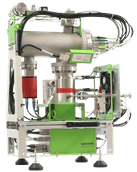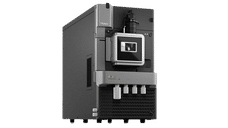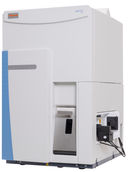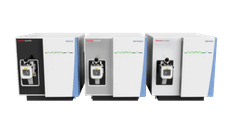Strategic Analysis of the World Laboratory Information Management Systems (LIMS) Markets
The laboratory information management systems (LIMS) market faces the challenge of devising industry-specific and customer-oriented strategies. However, long-term success requires integration with enterprise resource planning (ERP), chromatography data system, data archiving, and other IT solutions to support customer's enterprise-wide strategies, reveals new research from Frost & Sullivan.
"LIMS integration with ERP and other information systems permits incorporation of scientific data in business decisions, optimisation of the entire organisation, and better information utilisation among different corporate divisions to ensure smooth and seamless operation of business processes,, states Industry Manager Nate Cosper from Frost & Sullivan.
Apart from globalisation imperatives and the need for enterprise-level solutions, standardised business practices and regulatory compliance have catapulted the LIMS market into the growth stage with market revenues likely to increase from USD 209 million in 2003 to USD 328 million in 2009. The EU market currently comprises 32 per cent of the total market share and is forecast to grow at an annual average of 6.7 per cent over 2001-2009.
Standardised business processes are the primary advantage of an integrated LIMS solution, which ultimately increases productivity and traceability not only in the laboratories but also at the organisational level. End users are now increasingly turning to specialist LIMS vendors since in-house development has proven to be expensive and has failed to deliver global implementations that standardise processes across multiple locations, languages, time zones, and data formats.
The pharmaceutical sector remains the largest end-user segment for LIMS, primarily because of Food and Drug Administration and 21 CFR regulations mandating electronic documentation. Here, LIMS is expected to facilitate compliance and ensure a smooth transition to an entirely automated and paperless lab.
Following this trend, biotech companies are expected to increase LIMS purchases. The petrochemicals industry also holds immense potential. As early adopters of LIMS, they are becoming increasingly keen to replace existing systems and benefit from technology advancements. Funding for homeland security is also expected to stimulate demand for LIMS.
LIMS Vendors must understand evolving customer needs to achieve long-term success. Strategic Anticipation(r) is a technique that helps identify potential opportunities and create customer-centric solutions.
Various stakeholder groups have differing needs. For instance, while selecting a LIMS vendor, management executives emphasise standardisation and organisational control through enterprise integrations. Conversely, enterprise integrations are not high priority for scientists. LIMS vendors must, therefore, create different presentations for each stakeholder highlighting those features that are most important for each group.
"Flexible, highly configurable, low maintenance, easy-to-use systems with reduced costs of implementation and ownership are some of the common demands of stakeholder and end-user groups," says Mr. Cosper. "Vendors that can provide industry-specific functionality with decreased need for source code alterations are likely to capture a larger market share."
However, LIMS faces a distorted value perception with end users considering the standard 18-month implementation process tedious and lengthy. Intense marketing efforts that reiterate the LIMS' shift from a mere quality assurance and control tool to a total R&D solution could offset such negative perceptions. Value-added services such as maintenance contracts could further ease adoption and generate additional revenues.
A complete and successfully designed LIMS solution would need to incorporate instrument interfacing provisions. With genomics and proteomics gaining popularity in the drug discovery field, end users are increasingly demanding LIMS interfacing with DNA sequencing, mass spectrometers and protein array instruments. Workflow analysis and specific recommendations could smooth implementation and simplify the integration of LIMS with lab instruments.
As LIMS has become an enterprise system as opposed to an isolated lab solution, several barriers confront new entrants. However, alternative technologies such as SAP QM that have large customer bases remain a significant threat to traditional LIMS vendors.
Also challenging LIMS vendors is the reduced customer base due to rampant consolidation among pharmaceutical companies. Fortunately, such consolidation is stimulating the need for standardised integrated solutions with global reach, thereby driving LIMS implementations.
As the market becomes competitive, top LIMS vendors are partnering with scientific data management system providers to renew vertical-market focus, offer complete, differentiated solutions and enhance the value of LIMS integrations.
Most read news
Topics
Organizations
Other news from the department business & finance
These products might interest you

IonTamer ToF MS by Spacetek Technology
IonTamer instruments are time-of-flight residual gas analysers (TOF-RGA) for the analysis of gases
Compact Time-of-flight residual gas analyzer (TOF-RGA) for process analysis

PlasmaQuant MS Elite by Analytik Jena
LC-ICP-MS Is the Key to the World of Elemental Species
Highest Sensitivity and Lowest Detection Limits with PlasmaQuant MS Series and PQ LC

Xevo TQ Absolute by Waters
A new Tandem Quadrupole Mass Spectrometer for Quantification with Absolute power
Absolute performance, efficiency, productivity, and confidence for your most challenging compounds

iCAP TQ Triple Quadrupole ICP-MS by Thermo Fisher Scientific
Overcome unexpected interferences, reduce detection limits and improve data quality
Ultralow limits of detection with simplicity - even for the most challenging analytical applications

iCAP RQ single Quadrupole ICP-MS by Thermo Fisher Scientific
Robust ICP-MS with ease of use and high productivity for routine analysis
A complete multi-element analysis solution for your high-throughput routine laboratory

Thermo Scientific TSQ Triple Quadrupole Mass Spectrometry Systems by Thermo Fisher Scientific
Confident quantitation with triple quadrupole LC-MS systems
Mass Spectrometry Systems

TSQ 9610 GC-MS/MS by Thermo Fisher Scientific
TSQ 9610 GC-MS/MS for superb sensitivity and selectivity with outstanding reliable productivity
Eliminate unnecessary, unplanned instrument downtime, save helium and maximize productivity

Get the analytics and lab tech industry in your inbox
By submitting this form you agree that LUMITOS AG will send you the newsletter(s) selected above by email. Your data will not be passed on to third parties. Your data will be stored and processed in accordance with our data protection regulations. LUMITOS may contact you by email for the purpose of advertising or market and opinion surveys. You can revoke your consent at any time without giving reasons to LUMITOS AG, Ernst-Augustin-Str. 2, 12489 Berlin, Germany or by e-mail at revoke@lumitos.com with effect for the future. In addition, each email contains a link to unsubscribe from the corresponding newsletter.
Most read news
More news from our other portals
See the theme worlds for related content
Topic World Chromatography
Chromatography enables us to separate, identify and thus understand complex substances. Whether in the food industry, pharmaceutical research or environmental analysis - chromatography opens up a treasure trove of information about the composition and quality of our samples. Discover the fascinating world of chromatography!

Topic World Chromatography
Chromatography enables us to separate, identify and thus understand complex substances. Whether in the food industry, pharmaceutical research or environmental analysis - chromatography opens up a treasure trove of information about the composition and quality of our samples. Discover the fascinating world of chromatography!
Topic World Mass Spectrometry
Mass spectrometry enables us to detect and identify molecules and reveal their structure. Whether in chemistry, biochemistry or forensics - mass spectrometry opens up unexpected insights into the composition of our world. Immerse yourself in the fascinating world of mass spectrometry!

Topic World Mass Spectrometry
Mass spectrometry enables us to detect and identify molecules and reveal their structure. Whether in chemistry, biochemistry or forensics - mass spectrometry opens up unexpected insights into the composition of our world. Immerse yourself in the fascinating world of mass spectrometry!


























































